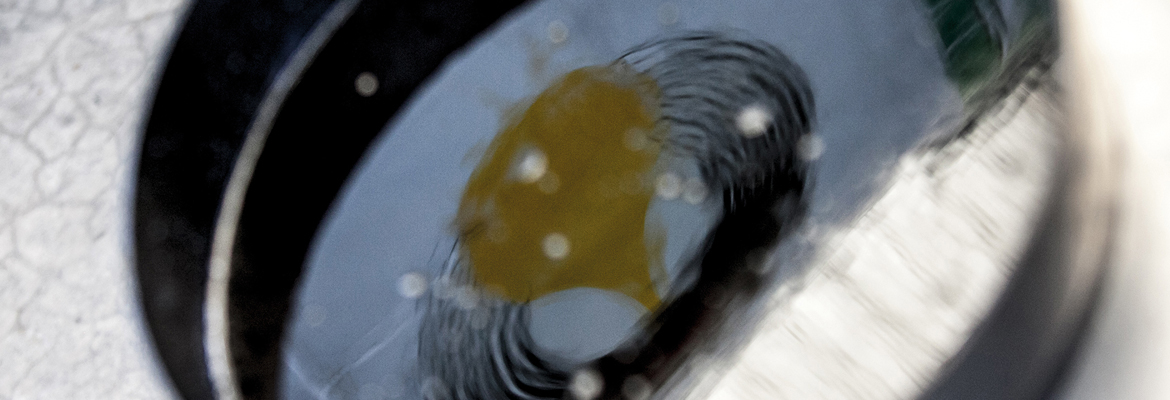According to COOU (the Italian Compulsory Consortium of Used Oils), the evaluation of its 30 years of activity is a chance to think over the potential offered by a recycling model of a substance which is fundamental to the industrial system. This model could be replicated in other sectors with a very positive impact both at economic and environmental level.
The data are all collected in the “Green Economy Report”, edited by the Italy’s Foundation for Sustainable Development. Its aim was to highlight not only the environmental performances of the Consortium, but also the wider impact of its 30-years activity on the environment, the economy and the social structure of Italy. The following shows the importance of its commitment to innovation in the entire productive cycle: “Looking at the historical series of Lubricating oil sales (decreasing) in relation to GDP (increasing), it is evident that there exists an inverse relationship between lubricating oil and wealth produced: it is a case history that shows how innovative processes can reduce the use of consumers goods by maintaining (or even improving) the quality of service”.
The history of COOU is particularly significant as it shows that it is possible to redress a very critical situation thanks to a strategic choice that managed to combine environmental protection and economic value.
The collection and regeneration of used oil started in a difficult and remote period: both initiated within a “Far-West scenario”.
It takes place during the 30’s “autarchy”, when the regeneration of used oil still was at a very rudimentary stage; impurities were removed through a rough filtration process: buckets and women’s stockings were often the only available instruments that could be used as a filter. Obviously, during the Second World War the main concern was survival, while environment was a very minor issue.
In the aftermath of the war the situation in this sector improved only at a quantitative level: environmental regulations and fiscal probity remained a mirage.
The discovery of illegal trade in the oil sector, the “scandalo petroli” of the 70’s, seems to close the time of tolerated abuses. However, in the lubricants field, fiscal exemption for regenerated oil is very generous and many people turn a blind eye on controls. Illegal use of lubricants in the market is quite common: with important amounts of new lubricating oil sold as recycled oil in order to pay lower taxes.
The economic advantages are relevant, but very little of the profits are invested in the improvement of the plants and in safety measures.
From an industrial and environmental point of view in the following decade things really start to change: increasing pressure from the EU forces the adoption of new regulations. It is in this framework that COOU was created in 1984. Its birth was dictated more by environmental concerns, rather than an advanced industrial vision.
At that time the collection cycle in Italy was in a phase of evolution: six regeneration refineries were active, as well as a fair amount of used oil collectors, often equipped with inadequate working gear.
Under pressure from COOU, things started to change, also thanks to public opinion which was getting increasingly alarmed by the consequences of environmental pollution. The Consortium implemented a strong media communication campaign directed primarily at the actors in the automotive sector (garages, mechanical workshops, corporate fleets) as well as those in the industrial sector. The campaign, however, was also directed at the general public, in order to involve millions of people in prevention, by explaining that four kilos of used oils, a standard car motor oil change, can pollute a surface as big as a football field, if improperly discharged into the sea. This message was sustained by a growing operational campaign. The age of tolerated dumping and risky discharge is over; today Storage tanks are built in a rigorous manner, it is mandatory to use pumps and filters; the collected used oil is fully analyzed and safety is a primary concern.
In 2003 we saw a new change in quality: the new Consortium Management propose a new approach to evaluate used oil production: the targets of collection seemed achieved but the newly improved methods of calculations of the amount of oil which is lost during the usage (evaporation, absorption) also considering the technology evolution (modern cars consume far less oil), show that in reality the oil left in circulation is much more than originally thought. There is a need for further efforts in the collection process.
This widespread effort in the collection process tends to promote, more and more, regeneration which now intercepts over 90% of recuperated oil; used oil combustion on the other hand starts to decrease, while particular attention is directed towards used oil polluted by dangerous substances which needs to be thermo-destroyed.
This represents an example of compliance with European regulations on waste destination, which in the sector put Italy at the top of good practices (the average percentage of regenerated oil in the EU is around 50%).
The impact of these policies has left a mark not only in terms of environmental protection, but also in the economic sector (a quarter of lubricant base oil comes from regeneration, with a significant impact on crude oil imports), as well as in the labour market.
The evolution of the Consortium chain, oil production, collection and regeneration, has been truly impressive: instead of the old and precarious structures, we have now 72 modern and highly structured Companies; over 90% of collectors is certified according to ISO 14001 and the main regeneration plants have an Emas registration.
Now, with a market that tends to go global and with competition for waste recycling becoming harder and harder, Italy finds itself facing yet another challenge. The excellent performance in used oil collection and regeneration systems represent an important starting point in this challenge for efficiency, safety and productivity.
Info



